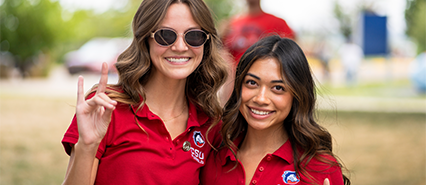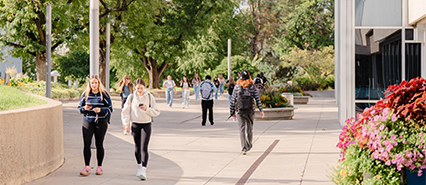Ethnic Heritage

SCEHADA’s mission is to preserve the rich heritage of Southern Colorado’s diverse ethnic, racial and cultural groups by collecting, preserving and making available the records, papers and manuscripts of the individuals, families and organizations who make up these groups.
Colorado Chicano Movement Archives
The CCMA is a substantial body of materials that document a pivotal movement, a civil rights movement, overlooked for decades. The Chicano Movement materials stand as testimony to the changes that were made in education, politics, the courts, labor, police brutality and media. Overshadowed by events in Texas and California, the Colorado Chicano Movement reveals a struggle for land rights by heirs of the Treaty of Guadalupe Hidalgo, post Mexican-American War (l848); a boycott against the Coors Corporation, headquartered in Colorado, for their racist hiring policies; also Colorado University's connection to Coors and their racist response to Chicano students.
The CCMA comprises 25+ individual collections from Chicano activists and organizations including the papers of Juan Federico "Freddie Freak" Miguel Arguello Trujillo and Jose Esteban Ortega, CU-Boulder and Pueblo activists; the Garcia Family Papers, documenting Pueblo UFW, education and environmental racism; Una Jaakola Papers, CU-Boulder activist; the records of UMAS, CU-Boulder; and the David Marquez Papers, containing a wide sampling of Chicano Movement newspapers. In addition, the CCMA includes an almost complete run of La Cucaracha, the Pueblo Chicano Movement newspaper, now digitized and available at the Colorado Historic Newspaper Collection.
Read "The Chicano Movement" by Fawn-Amber Montoya, PhD. To preview one of the CCMA collections, see "Select Images from the 'Freddie Freak' Trujillo Collection".
The Hispanic Heritage Collection
The Ruben Archuleta Collection consists of artifacts, documents, photographs, films, books and other rare publications documenting the Penitentes. The Penitentes were a Hispanic lay brotherhood which arose in the late 18th and early 19th centuries in northern New Mexico and southern Colorado and which practiced some unusual and controversial penitential rituals, including physical mortification. The Archuleta also contains Spanish artifacts, including stirrups, bridles and other items used by the Conquistadors.
The Liz Blanton Photograph Collection consists of 130 digitized images. Photographs are of several generations of members of the Aragon and allied families living in the colonia at Fowler, Colorado, ca. 1930s-1990s.
The Voices of Protest Oral History Collection contains interviews of Colorado Latino veterans conducted by Chicano Studies classes at CSU-Pueblo.
Italian Heritage Collection
Vincent Massari was a Colorado Democratic legislator and newspaper publisher who was very active in the Italian-American community both locally and nationally. Massari was a strong anti-fascist voice speaking against Mussolini in the years leading up to the Second World War. Massari was also instrumental in the establishment of the Southern Colorado State College in Pueblo, Colorado. The collection contains scrapbooks assembled by Massari, Italian language newspapers and correspondence generated during his political career. The scrapbooks primarily contain newspaper clippings and ephemera. The documents detail Massari’s career, family and community involvement, United States relations with Italy and Italian-Americans in the news. Of particular interest is material documenting Massari’s anti-fascist beliefs, his participation and support of Columbus Day, and his successful push to create a four-year college in Pueblo.
The Kathy Bacino Papers contain materials relating to the Italian-American community in Pueblo, Colorado, and the Bacino family particularly. This includes alien registration papers for Ms. Bacino’s grandparents, badges for Italian-American mutual aid societies, and membership booklet, Societa’ Indipente Siciliana.
The Anthony Rodosta Collection consists of a rare accordion, made by J. Bellino in Trinidad, Colorado in the 1920s. The accordion was made for Mr. Rodosta’s uncle, John Mulay. The accordion is one of only 14 made. Mulay played the accordion with his band, which traveled to various venues around southern Colorado. He later gave the accordion to Rodosta.
The Orman Collection of Native American Artifacts
The Orman Native American Artifact Collection, assembled by Colorado governor James B. Orman and continued by his son, Frederick Orman, was donated to the predecessor institution, Southern Colorado State College, of the University in 1964.
The heart of the Collection includes approximately 200 pieces of Native American art and artifacts including Navajo rugs of the pan-reservation style of the early 20th century, pottery pieces representative of a variety of the Pueblo cultures, and a group of Jicarilla and Western Apache baskets ranging in date from approximately 600CE to the 1930s.
The scope of Orman Native American Collection represents a broad and diverse perspective of Native American material culture as it includes materials geographically ranging from the American Southwest and from present-day Colorado north to Alaska. Much of the Collection is textiles; including approximately 45 Navajo rugs of the pan-reservation style of the early 20th century. It also includes five rare German town eye-dazzlers. The Collection also contains approximately 40 pottery pieces representative of a variety of the Pueblo cultures of New Mexico and Arizona which are contemporary with the textile collection, ca. 1880-1940. The pottery includes household pieces as well as several examples of wares made for the tourist trade.
Several of the major pottery-producing pueblos, including San Ildefonso, San Juan or Santa Clara and Santo Domingo are represented. A sizable group of Jicarilla and Western Apache baskets dating to the early 20th century comprise the other large portion of the Collection. The Collection also contains a small group of materials including musical instruments; moccasins and clothing; a headdress; three pieces of Northwest Coast sculpture; and complete scabbard, quiver, and bow and arrows. Finally, the collection also contains a small group of books, pamphlets, and maps.
Orman Exhibit Gallery
A selection of items from the Orman collection is on exhibit on the first floor of the LARC, in a gallery, just to the left of the front doors.
*Pictured above: Alien registration papers, Charles Bacino, February 18, 1942, Kathy Bacino Papers


